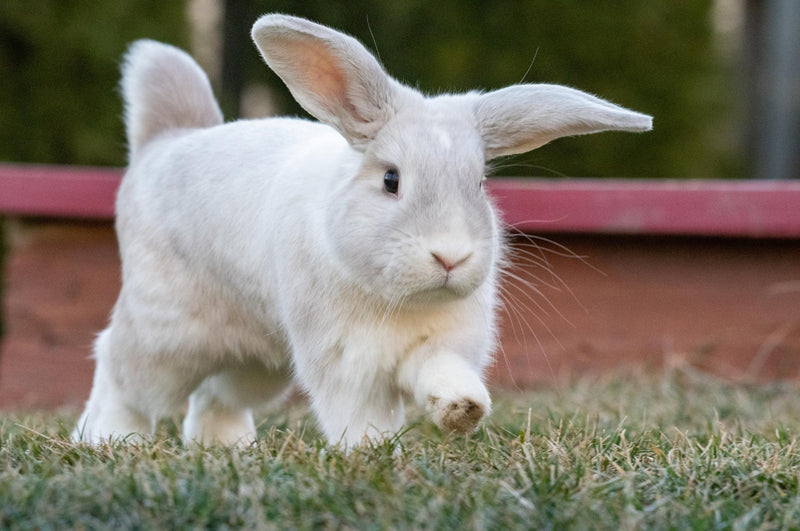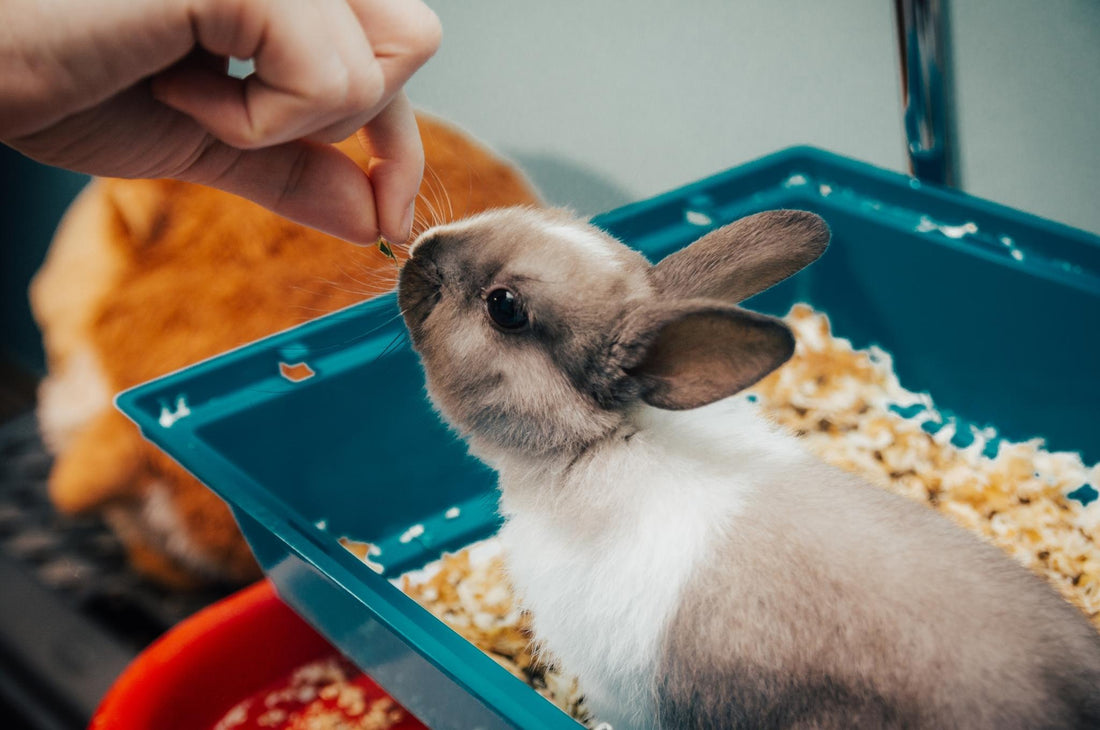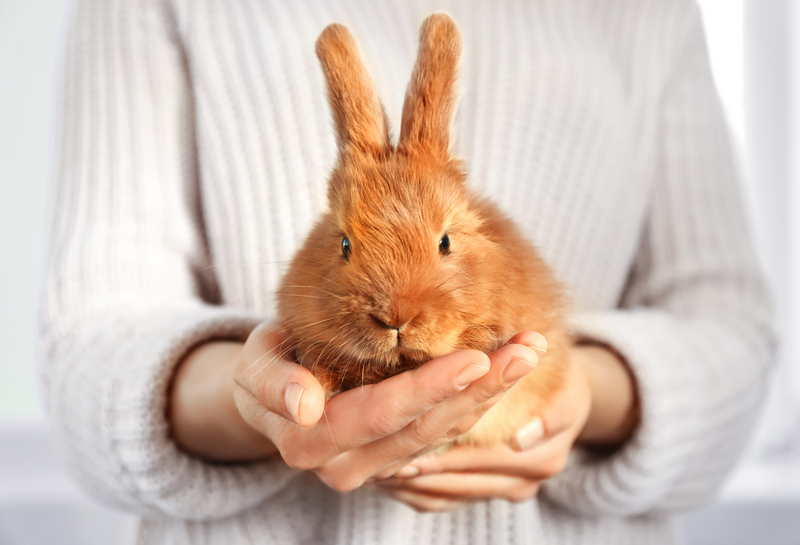
- 29 March 2022
- rabbits

Rabbits make wonderful pets. They are full of personality and love a cuddle, without the need for the high maintenance interaction of a dog. You might be thinking of getting a house rabbit, but if you do, you will want to be sure to stop them from scenting your house. As with other pets, the answer is to litter train; rabbits like kittens and puppies can be house trained.
But how do you train rabbits to use a litter box? Here we offer you a practical guide on how to litter train a rabbit at any age.

There is anecdotal evidence that you can litter train a rabbit at any age. Many owners feel that older rabbits are easier to train than the babies, as they can focus better on the routine you offer. However, a non-neutered rabbit will always be difficult to litter train. They will be pulled to mark the territory of your home with their urine. Consequently, if you have plans for a house rabbit, it is good to speak to your vet about castration and spaying.
Before we dive too deeply into the details, here is a summary of the steps you need to take to start litter training.
Step 1: Set up the litter tray
You will need a low sided tray, some hay and a rack filled with fresh hay.
Step 2: Find the best place for your tray
Finding a site that your rabbit prefers is best!
Step 3: Reward the rabbit for use
Every time they choose to use the litter tray, give them their favourite reward.
Step 4: Keep access easy
Remember, your rabbit is smaller than the average pet, so access to the litter tray must be manageable.
Step 5: Clean but not too clean
Rabbits associate the smell of their droppings with the place they go to the toilet.
Step 6: Offer a hay rack for grazing
Rabbits like to sit in their litter tray, so offer a hay rack for nibbles.
This basic guide on how to train a rabbit to use a litter box is a starting point. You may have a straightforward experience, and these steps may be enough. For those who have a rabbit with an extroverted personality, and they do exist, we offer more detail into how to litter train a rabbit.

When setting up a litter tray, you should buy some essential items. First, you need a large and low sided litter tray, which should be uncovered. You will need some organic litter, such as alfalfa or paper. However, hay is often best. You should never use soft wood such as pine for litter, as this can be damaging to the liver of a rabbit. Also, some cat litters contain zinc and can poison a rabbit.
Rabbits tend to eat their litter, which is why organic products such as alfalfa and hay are perfect. Therefore, buying clumping litter is a bad idea as it can block a rabbit’s digestive tract.
Your rabbit will have a place they like to go to the toilet. Nature guides them to find a spot and stick to it, so finding your rabbit’s preferred site makes litter training significantly easier. You will find that it is often in a corner, so you can start here, to begin with. However, it will soon become clear where your rabbits like to go.
The good news for training a rabbit towards a site is that they like to eat and go to the toilet at the same time. Therefore, if you position a hayrack with fresh, sweet-smelling hay in the corner of choice, it will promote this natural behaviour in your rabbit. It is always best to work with nature than against it, so letting the rabbit choose by keeping an eye out for where they feel drawn will save you a lot of headache.
As with puppies and kittens, rewarding positive behaviour is much more successful than getting frustrated at the wrong behaviour. Remember, the animal doesn’t know our rules, and there is no point in trying to negotiate this with a long explanation. Behavioural change is better gained by linking the positive behaviour you want with something pleasurable, such as a favourite food.
Keep an eye out for positive early behaviours, even if it is a bit hit or miss. Any opportunity to reinforce going to the litter tray should be taken.
Your rabbit is much smaller than other creatures who use litter trays. Therefore, you need a low sided tray that has easy access. The harder you make entry to the tray, the less likely it will be used. Equally, try to keep a clear area around the litter tray so it is free from clutter.
While you will want to clean the litter tray often to prevent a strong smell from building up in your home, you need to allow for some smell. A rabbit will associate the smell of their droppings with the place they go to the toilet. So changing the litter every day and a half or so will offer you a good balance for your rabbit and your home.
Using the rabbit droppings to guide the rabbit to the litter tray in the first place is a neat trick. So, if your rabbit has an accident, scoop up the droppings and place them in the litter tray, and it is likely to attract them to that area in the future.
While humans like to read or play on the phone while going to the toilet, a rabbit likes to graze on food. Therefore, placing a hay rack in the corner with your litter traying and lacing it with fresh and sweet-smelling hay will attract your pet to this area.
Don’t worry, it takes time to get this right. First, there will be a few accidents, so don’t give up on rabbit litter training. Being calm and consistent with rewards will lead to an improvement over time. Remember, getting angry with your rabbit will create a fear response and likely more toilet going in areas where you don’t want it to be.
When cleaning up accidents, do not use bleach cleaners, which contain ammonia found in urine. You might encourage your rabbit to this area in the future due to the smell.
Finally, if there is no improvement, you might want to speak to a vet about neutering or about any bladder issues your pet might have.

Want to make sure your furry friend is getting the right food? Check out our helpful blog article that looks at what you should be feeding your rabbit.


